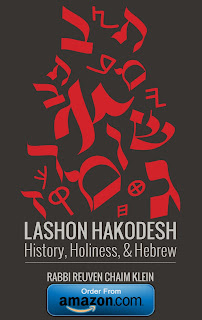In listing the twenty-four books of the Hebrew Bible, the Talmud refers[1] a book called Kinos "Lamentations" or Megillas Kinos "The Scroll of Lamentations"[2], written by the prophet Jeremiah. Scripture tells that when Jeremiah prophesied the destruction of the city of Jerusalem and the Holy Temple therein, he was scorned by the people around him. HaShem commanded the prophet Jeremiah to record all of his visions about a desolate Jerusalem in a scroll. After transcribing the prophecies concerning the future of Jerusalem through his student Baruch, Jeremiah's scroll was delivered to the King of Judah, Jehoiakim. Jehoiakim's reaction was to burn the scroll, which foretold the annihilation of Jerusalem[3]. The opening verse of this book rhetorically asks about the destroyed city of Jerusalem, "How does she sit alone?[4]"
The popular name for the Scroll of Lamentations is Eicha, "How", named for the first word of the scroll. Why, in the popular vernacular, is the book referred to as Eicha, if the Talmud refer to the book of Lamentations as Kinos? The Midrash says[5] that the book of Lamentations opens with the word Eicha because the numerical value of that word is thirty-six; the Mishnah teaches[6] that there are thirty-six transgressions, which are punishable with Kares, spiritual excision. Furthermore, the Midrash says that the letters in the word Eicha allude to the uniqueness of HaShem, the Ten Commandments, the twenty generations from Adam until Abraham when the commandment of circumcision was first commanded, and the Five Books of Moses, which the masses denied, resulting in HaShem destroying the Holy Temple and Jerusalem[7]. Similarly, the Talmud teaches[8] that the book of Lamentations starts with the word Eicha and continues in an acrostic-style poem with each stanza beginning with a sequential letter in the Hebrew alphabet because the Jews transgressed every sin from Aleph through Tav. According to these understandings, one can explain that the purpose of retaining the book of Lamentations for generations is to serve as a reminder as to what destructive powers lie in the severity of a sin. The book serves as a means to arouse feelings of repentance for future generations. In order to achieve this effect, one must stress the word Eicha at the beginning of the book. Therefore, the colloquial speech of the masses styles the book Eicha not Megillas Kinos, in order to stress the effects of the word Eicha.
Rabbi Levi Yitzchack of Berditchev (1740-1809) said[9] that after the arrival of the Messiah, the book of Eicha will still be read. Why should the book that laments the destruction of the Holy Temple and Jerusalem be read even during the Messianic Era, when the Temple and city will have already been rebuilt? The Berditchever explains that it will be read with the opposite tone as it is read during the exile. He explains that when asking about Jerusalem "How does she sit alone?", one will not mean to ask in mourning "what sins caused the city of Jerusalem to lie barren", rather one will intend to ask the opposite, "what sins could have possibly caused the city of Jerusalem to lie deserted if it is now so vibrant and jovial." Thus, the Book of Lamentations contains a dual meaning, it not only serves as a book lamenting the unfortunate annihilation of Jerusalem, but it also serves as a source of hope for a time when the destruction of Jerusalem will seem so unfeasible. The former purpose of the book is represented in its name Megillas Kinos, while the latter purpose of the book is reflected in the popular name, Eicha. By calling the book Eicha, not Megillas Kinos, the masses are optimistically waiting for arrival of the Messiah who shall herald the building of the Holy Temple, speedily and in our days: Amen.
[1] Bava Basra 14b
[2] See Jerusalemic Shabbos 16:1
[3] See Jeremiah Chapter 36
[4] Lamentations 1:1
[5] Lamentations Rabbah §1:1
[6] Kerisos 2a
[7] The letters of Eicha are: Aleph, Yud, Chaf, Hey. Aleph equals one and thus alludes to the oneness of HaShem; Yud equals ten, the Decalogue; Chaf equals twenty, the twenty generations; and Hey equals five, the Pentateuch.
[8] Sanhedrin 104b
[9] [I've heard this in his name, but I cannot find the source]
Tuesday, July 24, 2007
The Scroll of Lamentations
Posted by
Reuven Chaim Klein
at
3:54 PM
![]()


 orcid.org/0000-0001-9317-3282
orcid.org/0000-0001-9317-3282

2 comments:
FOOTNOTE 9 VERY UNLIKELY BECAUSE CHASSIDIM HAVE THE MINHAG DO THROW OUT THE KINNOS AT THE END OF EVERY TISHBAV BECAUSE NEXT YEAR THEY WONT USE IT.
Kinnos has nothing to do with Eicha, they don't throw out Eicha every year, because Eicha is a part of Tanach.
Post a Comment